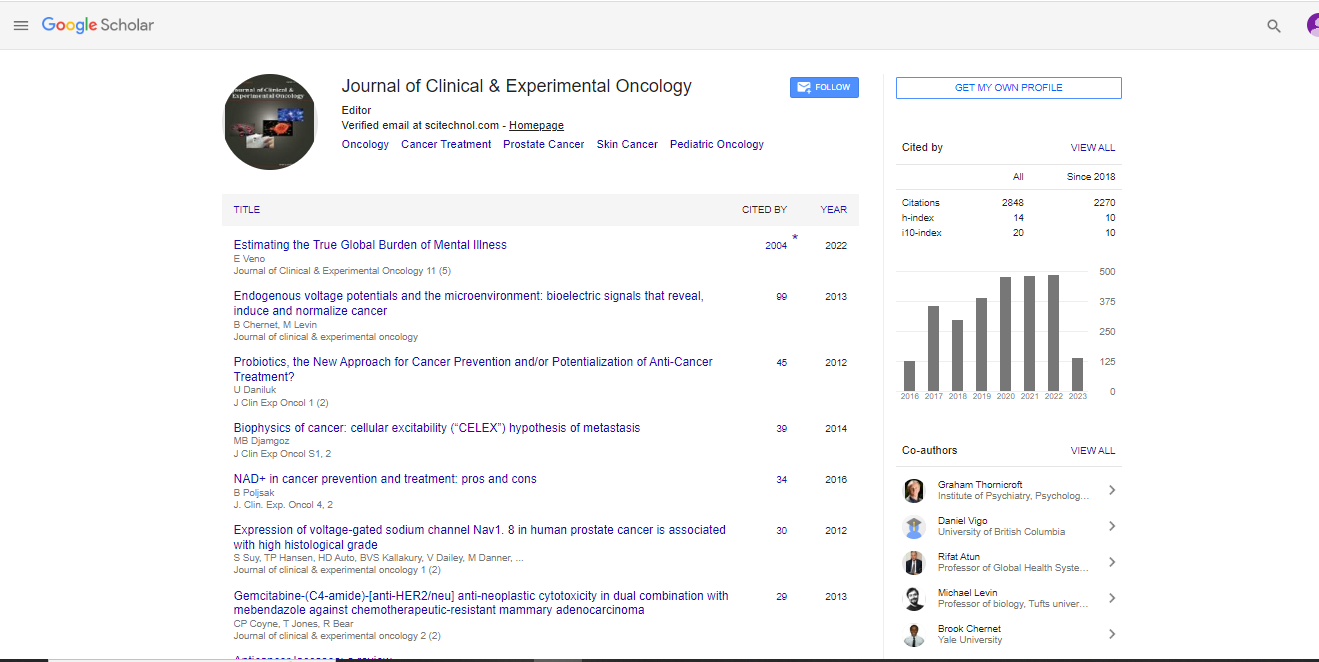Research Article, J Clin Exp Oncol Vol: 6 Issue: 1
Thromboembolic Events in Polycythaemia Vera Patients:An Audit of the Hungarian Philadelphia Negative Chronic Myeloproliferative Neoplasia Register
| Péter Dombi1, Hajnalka Andrikovics2, Árpád Illés3, Judit Demeter4, Lajos Homor5, Zsófia Simon3, Miklós Udvardy3, Ádám Kellner6 and Miklós Egyed6 | |
| 1St. Borbála Hospital, Tatabánya, Hungary | |
| 2Laboratory of Molecular Diagnostics, Hungarian National Blood Transfusion Service, Budapest, Hungary | |
| 3Department of Internal Medicine, University of Debrecen, Debrecen, Hungary | |
| 4Department of Internal Medicine, Semmelweis University, Budapest, Hungary | |
| 5Pázmány Péter Catholic University, Budapest, Hungary | |
| 6Department of Hematology of Somogy County Kaposi Mór Teaching Hospital, Kaposvár, Hungary | |
| Corresponding author : Miklós Egyed
Department of Hematology of Somogy County Kaposi Mór Teaching Hospital Tallián Gy. str. 20-32 Kaposvár, 7400, Hungary Tel: +36 30 9021 067 Fax: +36 82 510 076 E-mail: dregyedmiklos@yahoo.com |
|
| Received: November 15, 2016 Accepted: December 06, 2016 Published: December 14, 2016 | |
| Citation: Dombi P, Andrikovics H, Illés Á, Demeter J, Homor L, et al. (2016) Thromboembolic Events in Polycythaemia Vera Patients: An Audit of the Hungarian Philadelphia Negative Chronic Myeloproliferative Neoplasia Register. J Clin Exp Oncol 6:1. doi: 10.4172/2324-9110.1000173 |
Abstract
Objective: The Hungarian National Registry for Philadelphia chromosome negative myeloproliferative neoplasms was used to assess the clinical characteristics of Hungarian patients with polycythemia vera.
Methods: Data from 351 JAK2 V617F-positive patients diagnosed with PV were collected online from 15 haematology centres reporting clinical characteristics, therapeutic interventions, venous and arterial thromboembolic events, and myelofibrotic or leukaemic transformations. Vascular events (thromboembolic and haemorrhagic) were evaluated before and after diagnosis based upon the Landolfi risk assessment scale.
Results: TE were reported on 116 occasions (106 patients) before diagnosis and 152 occasions (102 cases) during follow-up. Compared to before diagnosis, after diagnosis frequency of major arterial events decreased from 11.7% to 2.6% (p<0.0001), and minor venous events increased from 2.0% to 14.2% (p<0.0001); there was no significant change in number of major venous events (from 6.3% to 8.8%; p=0.25) or minor arterial events (from 13.1% to 17.7%; p=0.12). Bleeding events were recorded in 6.4% of patients. Despite treatment, 42.2% of patients with prior thromboembolic events had recurrent thromboembolic complications. After diagnosis age and prior history of thromboembolic events were independent risk factors for arterial events, and white blood cells and diabetes for venous events. Hydroxyurea use in the low+moderate risk Landolfi group slightly, but not significantly, increased thromboembolic event risk (p=0.74).
Conclusions: This registry enables characterisation of patients with polycythemia vera. Data suggest the need for accuracy of diagnostic criteria and compliance with risk-adapted therapeutic guidelines.
 Spanish
Spanish  Chinese
Chinese  Russian
Russian  German
German  French
French  Japanese
Japanese  Portuguese
Portuguese  Hindi
Hindi 



